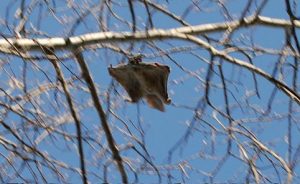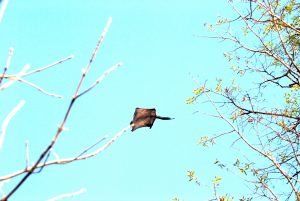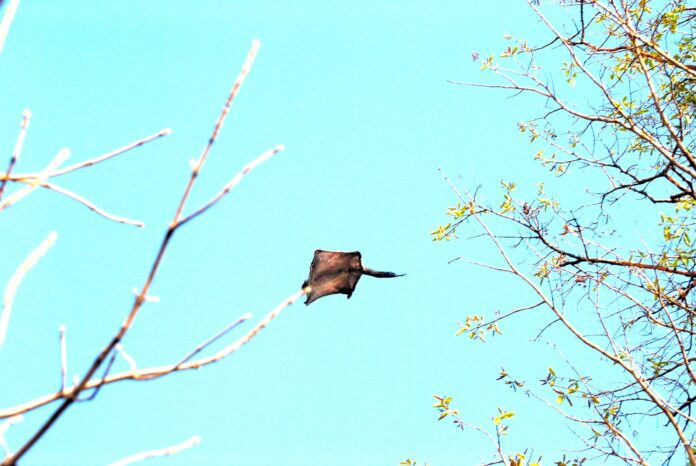BY HARRY WEEKES

The nature writer David Quammen once opened a piece with the following question: “What is the largest mammal you have never heard of?” Needless to say, this is an impossible question to answer, since an answer implies that you know something about the topic, and if you’ve never heard of it, how can you know it? Quammen’s article went on to describe the okapi, a gangly relative of the giraffe that lives in the forests of Central Africa and that looks a little bit like a moose with striped legs.
So, to paraphrase and poach Quammen, “What is the most common mammal you have never seen here?,” a list jumps to mind—badger, pine marten, snowshoe hare, Yeti. With the exception of the last one, the others I chance upon.
But there is one mammal that I have seen only once in 47 years, even though it is common enough—the northern flying squirrel. Yep, that’s right—flying squirrels—one of those animals we hear about and “know about” but that we rarely ever come in contact with, even though they are relatively common.
The why is simple: flying squirrels are strictly nocturnal. Naturally, you are not going to find them out in the day unless something peculiar happens. Something peculiar, like the squirrel entered your friend’s house and was getting ready to spend the day sleeping behind books when the family cat found it. This is when my friend came in wondering what the cat could be pawing at and started removing books, one at a time. As the telltale ball of fuzz emerged, it as quickly exploded off the shelf onto my buddy’s shoulder, then glided right into the wall. This is how the squirrel ended up in a cat carrier, and how I ended up on the other side of my favorite kind of phone call, the “you’ll-never-guess-what-kind-of-cool-animal-I-just-found” call.
“I’ll be right there.”
 And, 15 minutes later, I was looking at a small squirrel huddled in the back of the cage, doing what it could to tuck its head into its body. This awesome little beast had beautiful gray fur, and appropriately dark and bulging eyes. The flap of skin stretched between its front and hind legs, that enables it to glide from tree to tree, or from shoulder to wall, was gently folded, and came complete with a black racing stripe.
And, 15 minutes later, I was looking at a small squirrel huddled in the back of the cage, doing what it could to tuck its head into its body. This awesome little beast had beautiful gray fur, and appropriately dark and bulging eyes. The flap of skin stretched between its front and hind legs, that enables it to glide from tree to tree, or from shoulder to wall, was gently folded, and came complete with a black racing stripe.
Wondering what to do with it, we simply took it outside and opened the carrier, at which point the squirrel took a series of bounding, gliding hops directly toward the nearest conifer, where it disappeared.
Flying squirrels are obligate nocturns—sticking to the night and away from lights. This is so antagonistic to how we humans go through the world, either in the light of day or swaddled in little cocoons of light we carry, that it’s no wonder these squirrels stay off our radar.
When humans walk into the night, unaccompanied by light, we tend to get really still and quiet. My eyes open a little wider and I start blinking a lot more purposefully, hoping to adjust to the various shapes in the dark. There is something comforting and exciting about knowing that little squirrels are gliding through the trees around me, Frisbeeing themselves from one trunk to the next, their action and ease the complete opposite of my own.
Harry Weekes is the founder and head of school at The Sage School in Hailey. This is his 47th year in the Wood River Valley, where he lives with his wife Hilary and their three kids—Georgia, Penelope and Simon—a nice little flock.



